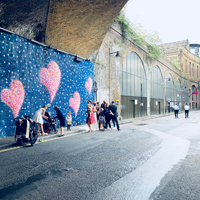Pros & Cons of Living in San Rafael
Summary: If you're considering a move to San Rafael, this article discusses the pros and cons of living in San Rafael.
Thinking about moving to San Rafael? Below we highlight some of the pros and cons of living in San Rafael.
San Rafael, a city nestled in the heart of the Mendoza province, is a place of contrasts. It's a city that offers a unique blend of urban sophistication and rural charm, with a rich cultural heritage and a vibrant, modern lifestyle. But like any city, living in San Rafael comes with its own set of pros and cons. In this article, we'll delve into the advantages and disadvantages of making San Rafael your home.
Pros of Living in San Rafael, Argentina
One of the most significant advantages of living in San Rafael is its stunning natural beauty. The city is surrounded by a diverse landscape that includes the towering Andes Mountains, the fertile Atuel River, and the vast Diamante Desert. This natural bounty provides ample opportunities for outdoor activities such as hiking, fishing, and horseback riding. For instance, the Reserva Natural Otamendi, a nature reserve located just outside the city, is a popular spot for bird watching and nature walks.
San Rafael is also known for its thriving wine industry. The region's unique climate and fertile soil make it ideal for vineyards, and the city is home to some of Argentina's most renowned wineries. Wine enthusiasts can visit these wineries, such as the Bodega La Abeja and the Bodega Jean Rivier, to sample their offerings and learn about the winemaking process.
Another advantage of living in San Rafael is its rich cultural scene. The city hosts numerous festivals and events throughout the year, such as the Fiesta Nacional de la Vendimia, a celebration of the grape harvest, and the San Rafael Film Festival. The city is also home to several museums and art galleries, including the Museo de Historia Natural, which showcases the region's natural history, and the Museo Ferroviario, which explores the city's railway heritage.
San Rafael also boasts a high quality of life. The city has a low crime rate, excellent healthcare facilities, and a strong education system. The Universidad Nacional de Cuyo, one of Argentina's top universities, has a campus in San Rafael, offering a wide range of courses and research opportunities. The city also has a vibrant food scene, with a plethora of restaurants serving everything from traditional Argentine cuisine to international fare.
Finally, the cost of living in San Rafael is relatively low compared to other Argentine cities. Housing is affordable, and the cost of groceries, utilities, and transportation is also reasonable. This makes San Rafael an attractive option for those looking to stretch their budget further.
Cons of Living in San Rafael, Argentina
Despite its many advantages, living in San Rafael also has its drawbacks. One of the main disadvantages is its remote location. The city is located over 200 kilometers from Mendoza, the nearest major city, and over 1,000 kilometers from Buenos Aires, the country's capital. This can make travel to and from San Rafael time-consuming and expensive, particularly for those who need to commute for work or have family in other parts of the country.
Another downside of living in San Rafael is the language barrier. While English is taught in schools, Spanish is the primary language spoken in the city. This can make it challenging for non-Spanish speakers to communicate and integrate into the local community. However, many locals are friendly and patient with foreigners, and there are language schools available for those who wish to learn Spanish.
The city's economy is another potential drawback. While San Rafael has a thriving wine industry, other sectors are less developed. Job opportunities can be limited, particularly for those in specialized fields. However, the city is making efforts to diversify its economy, with sectors such as tourism and renewable energy showing promise.
San Rafael's climate can also be a disadvantage for some. The city experiences hot summers and cold winters, with temperatures often reaching over 30 degrees Celsius in the summer and dropping below freezing in the winter. This can make outdoor activities less enjoyable during these periods, and can also lead to higher utility bills for heating and cooling.
Finally, while San Rafael has a low cost of living, wages in the city are also relatively low. This can make it difficult for residents to save money or afford luxuries. However, for those who are self-employed or have a source of income from outside the city, this may not be a significant issue.
 Universal Tax Professionals
Universal Tax ProfessionalsConnect
We are a U.S. tax firm specializing in taxes for Americans living abroad. We offer expert guidance on navigating the complexities of filing overseas income, foreign asset reporting, and ensuring compliance with both U.S. and international tax regulations. Universal Tax Professionals is a team of experienced experts well-versed in the latest tax laws, including the nuances that apply to expatriates.
Click connect to have our partner contact you via e-mail and/or phone.
 Universal Tax Professionals
Universal Tax ProfessionalsWe are a U.S. tax firm specializing in taxes for Americans living abroad. We offer expert guidance on navigating the complexities of filing overseas income, foreign asset reporting, and ensuring compliance with both U.S. and international tax regulations. Universal Tax Professionals is a team of experienced experts well-versed in the latest tax laws, including the nuances that apply to expatriates.
Connect
Click connect to have our partner contact you via e-mail and/or phone.
About the Author
 Joshua Wood, LPC joined Expat Exchange in 2000 and serves as one of its Co-Presidents. He is also one of the Founders of Digital Nomad Exchange. Prior to Expat Exchange, Joshua worked for NBC Cable (MSNBC and CNBC
Primetime). Joshua has a BA from Syracuse and a Master's in Clinical and Counseling Psychology from Fairleigh Dickinson University. Mr. Wood is also a licensed counselor and psychotherapist.
Joshua Wood, LPC joined Expat Exchange in 2000 and serves as one of its Co-Presidents. He is also one of the Founders of Digital Nomad Exchange. Prior to Expat Exchange, Joshua worked for NBC Cable (MSNBC and CNBC
Primetime). Joshua has a BA from Syracuse and a Master's in Clinical and Counseling Psychology from Fairleigh Dickinson University. Mr. Wood is also a licensed counselor and psychotherapist.
Some of Joshua's articles include Pros and Cons of Living in Portugal, 10 Best Places to Live in Ireland and Pros and Cons of Living in Uruguay. Connect with Joshua on LinkedIn.




